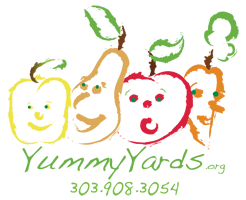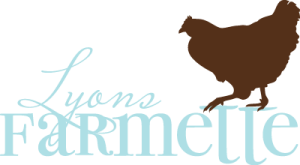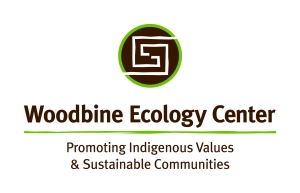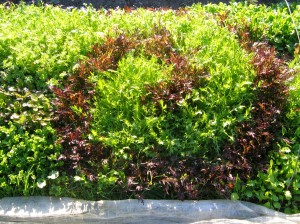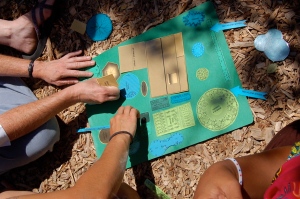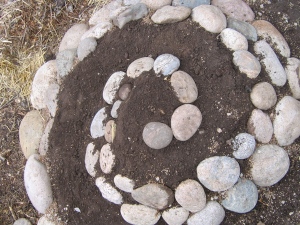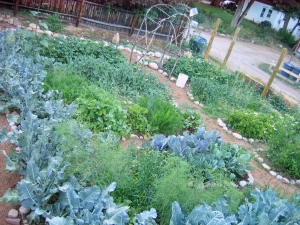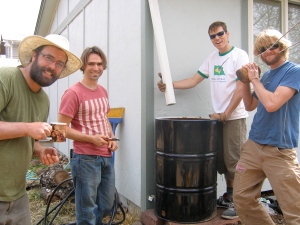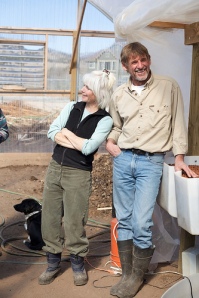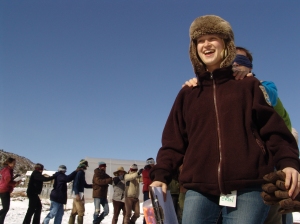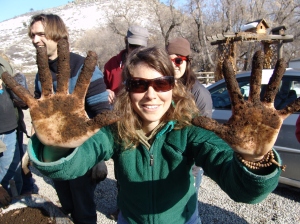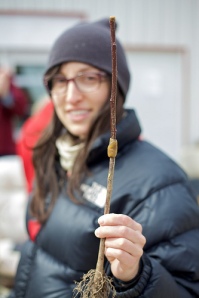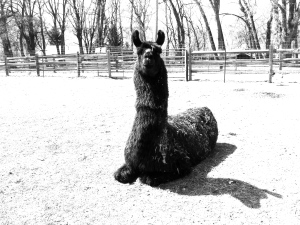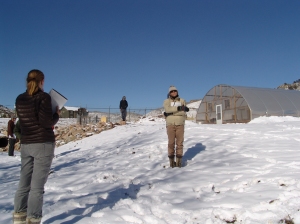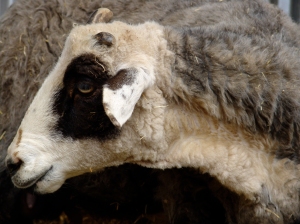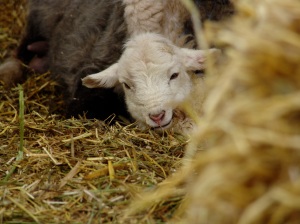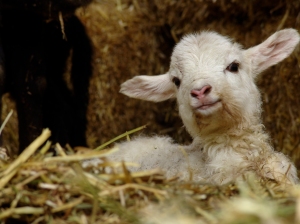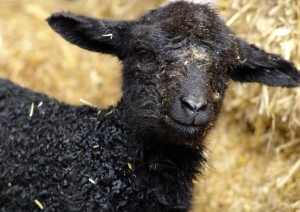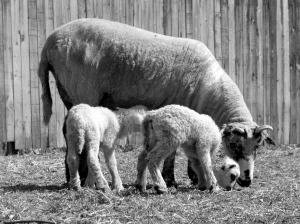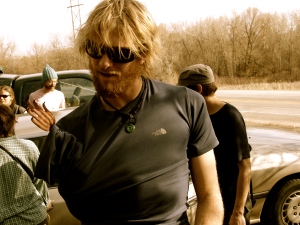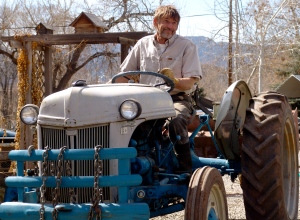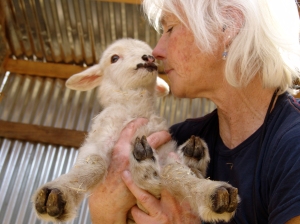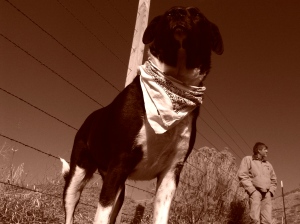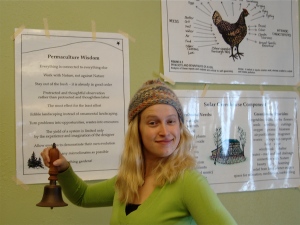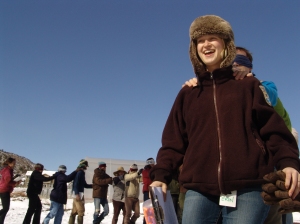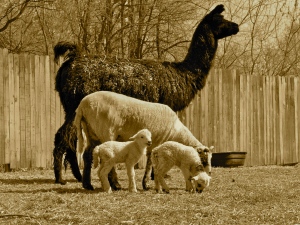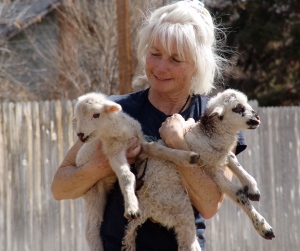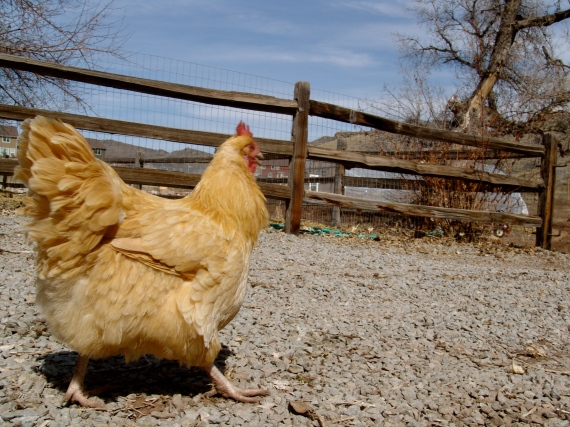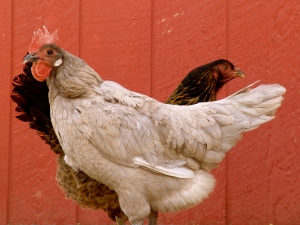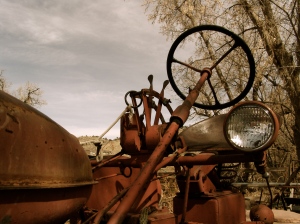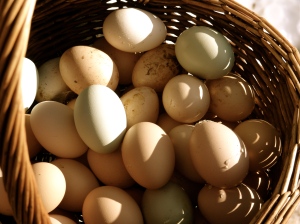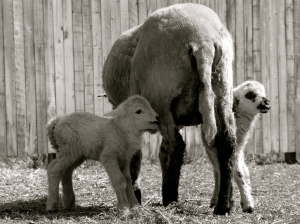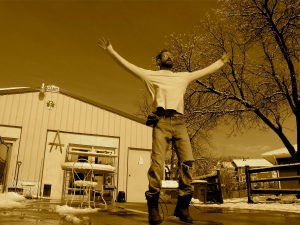
Andrew taking care of himself (zone zero) at the Barnette (our zone zero for the course).
Permaculture design is a holistic approach. We design for optimal efficiency, resilience and, in the long-term, as little human intervention as possible . Permaculture design utilizes specific zones of efficiency to optimize production and energy cycling and give us more time in the hammock!
Zone Zero is the most important of them all. It’s defined as “you and your house”. If Zone Zero does not function harmoniously then all other zones are highly affected and may cease to function or exist at all. Take care of Zone Zero first.
Zone One needs daily attention. It contains the elements you use most often, things that require continual observation, including your daily food and medicinal gardens, social spaces, rain barrels, small ponds, a greenhouse, trellis, arbor, bird feeders, household storage and anything else you interact with multiple times a day.
Zone Two is an area of semi-intensive cultivation. Small orchards can be planted in this zone as well as staple and canning crops and less frequently picked perennial and annual veggies. Zone Two might also contain hoop houses for season extension, wood storage, a shop, bards and tool sheds. Often chickens and rabbits are placed on the border between Zones One and Two with beehives, fish, bats and other small animals well within Zone Two.
Zone Three requires even less attention and energy from humans and may be referred to as the “Farm Zone”. Grow field crops, cover crops, commercial gardens, large fruit and nut trees, animal forage, seedlings for grafting and windbreaks here in Zone Three. This area is also home to cows, horses, pigs, sheet, goats and other large animals as well as feed and water storage for these animals and plants.
Zone Four boarders on wilderness, usually applying to larger properties and requiring very little management if any. Zone Four activities may include: foraging, selective forestry, wood lot harvesting, hunting, some pasture, gathering and grazing.
Zone Five is the zone that is rarely visited, a place where we go for inspiration and observation. It’s a section of the property that is given back to the Earth. Here native plants grow unmanaged, lakes and creeks flow freely, and wild animals roam, forage, hunt and live without human disturbance. There is some debate as to whether humans should enter Zone Five for meditation or whether we should just let Zone Five areas alone altogether, to exist and evolve unwatched by human eyes. (The Zonation information above is adapted from “Gaia’s Garden by Toby Hemenway”, a must-read for the budding permaculturist. Thank you, Toby. And now back to Lil’Chick…)
But within all of these important zones it is that of Zone ZERO I am smitten with.
I am Zone Zero. I have skills that I provide, just like all other zones, and in order to provide my skills, I have needs that need to be fulfilled first. My skills are that of an artist, creating music, photography, and the written word. I am also an armature herbalist, teacher, creative chef, listener, and mentor. BUT I cannot provide these skills unless I take care of my needs first. Some of my needs are: having time for reflection and meditation, yoga, companionship, laughter with my girlfriends, exploration, and education, on top of the obvious, like water, food and shelter among a few other things. If I don’t make the time to satisfy these needs I fall out of whack. If I don’t take the time to reflect and listen to my body and heart I am not in the space to mentor or provide guidance to friends and family. If I don’t nurture myself with yoga, good food, and laughter then I am not in the space to nurture others. If I don’t provide myself with loving companionship then I am not a loving companion.
A couple of months ago a friend came to me in times of relationship distress. We drank tea and talked for hours. She was unhappy and didn’t feel that she was getting what she needed out of her relationship. I asked her if she had recently spent time with herself, really connected to her inner being. The gist of her response was “no”. I have learned that when we don’t truly connect to ourselves on our clock, meaning not at the convenience of others but at the convenience of ourselves, then we feel that those around us are not providing what we need. We need to find time to be attentive to ourselves. If we lack that self-attentiveness we will most likely NOT see it gifted by others. Like anything else, if we are not compassionate to ourselves we will notice that others are not being compassionate. Those around us are an exact reflection of what we are to ourselves. Just like mother nature; hurting, in turmoil and illness, is a reflection of a great deal of the human population. What we don’t recognize is that WE are what we need.
When we don’t feel good, or are ungrounded, we often project this unsettled physicality’s and emotions onto those we love, blaming them for how we are feeling or blaming them for not providing what we need, which is something only we can provide for ourselves. A relationship that relies on an outside source in order to provide and sustain a fluid and functional relationship is a failed system. Cycling back to this ancient old way of life, recently and modernly named, “permaculture”.
I have just completed a two-week intensive program at Permaculture Camp, as I like to call it. I have walked away with a great amount of knowledge, but most importantly a wisdom which I have forgotten. Understanding how nature works and functions in the way nature intended allows me to understand how people function in the way nature intended. I am forever connecting “permaculture terms” to that of self growth.
When you take care of Zone Zero FIRST, you’ll have enough energy to take care of the others and a full, beautiful and sustaining design is complete.
